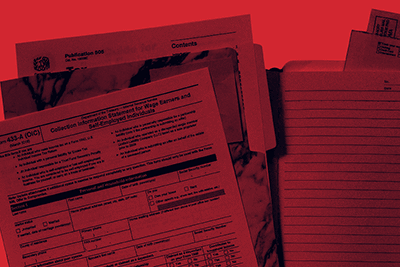Tax
CARES Act Tax Considerations for Insurers
Article reading time: 4 minutes 30 seconds
Hot Take:

The CARES Act includes numerous relief provisions to assist businesses and individuals impacted by the COVID-19 pandemic. Some of the more significant tax provisions that are intended to improve the cash flow and liquidity needs of corporate taxpayers, including insurers, are related to modifications to the carryback rules of NOLs, accelerated recovery of AMT credits, bonus depreciation eligibility for Qualified Improvement Property, and others. These provisions may also have financial reporting implications that need to be considered for US GAAP and statutory purposes.
Full Article
The Coronavirus Aid, Relief, and Economic Security Act or the ‘‘CARES Act’’ signed into law on March 27, 2020, includes numerous relief provisions to assist businesses and individuals impacted by the public health and economic impacts of COVID-19. The Act also includes several significant tax provisions aimed to improve the cash flow and liquidity needs of U.S. businesses.
Net Operating Losses
The Tax Cuts and Jobs Act of 2017 (TCJA) made significant changes to the carryforward and carryback rules for net operating losses (NOLs). NOLs generated after December 31, 2017, by entities other than property and casualty insurance companies have an indefinite carryforward period, and no carryback is allowed. Additionally, these NOLs are subject to an 80% taxable income limitation. NOLs of property and casualty insurance companies can be carried forward 20 years and carried back 2 years, without a taxable income limitation.
The CARES Act modifies the treatment of NOLs arising in tax years 2018, 2019, and 2020, such that these losses may be carried back to each of the five years preceding the taxable year of the loss without a taxable income limitation. The modified NOL carryback rules apply to both life and non-life insurance companies. Thus, insurers can potentially carry back NOLs arising in 2018, 2019, and 2020 as far back as 2013, 2014, and 2015, respectively. This carryback provision can be especially valuable as the maximum corporate tax rate applicable to tax years ending before 2018 was 35 percent, much higher than the current 21 percent.
The IRS has issued guidance in the form of Revenue Procedures 2020-24 and 2020-26 for taxpayers seeking to take advantage of the NOL carryback rules.
Revenue Procedure 2020-24 provides guidance in the following areas:
- waiving the carryback period in the case of NOLs arising in a taxable year beginning after December 31, 2017, and before January 1, 2021,
- disregarding certain amounts of foreign income subject to transition tax that would normally have been included as income during the five-year carryback period, and
- waiving a carryback period, reducing a carryback period, or revoking an election to waive a carryback period for a taxable year that began before January 1, 2018, and ended after December 31, 2017.
Revenue Procedure 2020-26 grants a six-month extension of time to file Form 1139, Corporation Application for Tentative Refund, with respect to the carryback of NOLs that arose in a taxable year that began during the calendar year 2018 and that ended on or before June 30, 2019. Generally, an NOL carryback claim must be filed within 12 months of the end of the taxable year in which the NOL arose. With the six-month extension, calendar year taxpayers with NOLs generated in 2018 now have until June 30, 2020, to file a carryback claim.
It is important to note that even though the corporate AMT regime was repealed as part of the TCJA for tax years beginning after December 31, 2017, AMT will need to be considered when preparing an NOL carryback claim. This means taxpayers carrying back NOLs to pre-TCJA years will need to calculate their AMT NOLs and limit the utilization of the AMT NOL to 90 percent of taxable income. Any minimum taxes generated in the carryback years can be used to offset regular tax in 2019 or requested as a refund.
With respect to insurers filing a life/non-life consolidated return, it will be important to consider the life/non-life rules related to cross sub-group NOL limitations, as well as “bumping” and “5-year eligibility” rules.
AMT Credits
Prior to the CARES Act, companies with an AMT credit carryforward could use the AMT credit to reduce their regular tax obligation in the years 2018 through 2020. Any remaining AMT credit carryforwards were eligible for a 50 percent refund in 2018 through 2020 and a 100 percent refund in 2021. The CARES Act accelerates the recovery of AMT credits, making them fully refundable either in 2018 or 2019. The credit can be claimed on the 2019 return when filed or by making an election to claim the credit on the 2018 tax return by filing a Form 1139.
Qualified Improvement Property
Qualified Improvement Property (QIP), as defined in IRC Sec. 168(e)(6), is an improvement to the interior portion of nonresidential real property placed in service at any date after the building itself has been placed in service. It specifically excludes improvements to enlarge a building, improvements to elevators, escalators, and any internal structural framework. When drafting the TCJA, Congress intended for QIP to be 15-year property eligible for bonus depreciation; however, due to an inadvertent omission in the statute, QIP was assigned a 39-year life, thus being ineligible for bonus depreciation. The CARES Act included a technical correction to treat QIP as a 15-year asset. The change is effective retroactively as of January 1, 2018.
Revenue Procedure 2020-25 provides procedural guidance allowing taxpayers to change their depreciation under IRC Section 168 for QIP placed in service after December 31, 2017, in its taxable year ending in 2018, 2019, or 2020. Taxpayers may do so by filing an amended 2018 return, an administrative adjustment request (AAR) under IRC Section 6227 or a Form 3115, Application for Change in Accounting Method.
Business Interest Expense Deduction
Section 163(j) as enacted under the TCJA limits the deductibility of business interest expense to the sum of (i) the taxpayer’s business interest income for the tax year; (ii) 30% of the taxpayer’s adjusted taxable income for the tax year; and (iii) the taxpayer’s floor plan financing interest expense. The CARES Act increases the deductibility limitation from 30 percent to 50 percent of adjusted taxable income for taxable years beginning in 2019 and 2020.
Financial Reporting Implications
The CARES Act and the COVID-19 pandemic may have significant effects on a company’s financial reporting under US GAAP and statutory accounting principles. Some financial reporting areas to consider include the following:
- Realizability of deferred tax assets and valuation allowance assessments
- Undistributed earnings and the indefinite reimbursement assertion
- Accounting for discrete tax items and the calculation of the annual effective tax rate for interim reporting purposes
- Statutory admissibility calculations under SSAP 101, paragraph 11a. in light of the expanded NOL carryback provision
For other relief provisions not discussed above, please refer to JLK Rosenberger’s COVID-19 Business Resource Center which includes regular updates for insurers.
